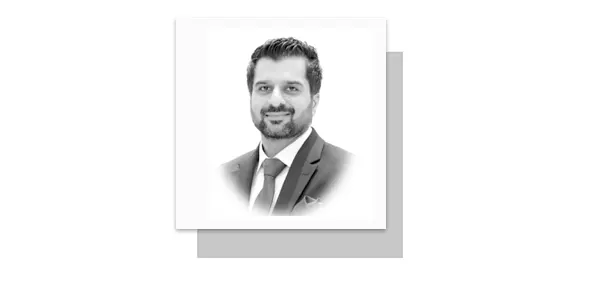THE desire to create communities is ingrained in human nature, offering a feeling of security. The preservation of identity in the human mind results in population growth being seen as natural. The population explosion is commonly seen as a modern crisis, but fundamentally it is a deeply ingrained natural occurrence driven by humanity’s instinctual need for identity preservation and survival. The development of human societies from tribes to nations has always been linked to security, belonging and growth. The exponential population growth demonstrates the inherent human desires and emphasizes our natural inclination to establish and grow communities. Nevertheless, this organic pattern presents notable hurdles, especially regarding the management of resources, sustainability and societal equilibrium.
Population growth throughout history can be traced back to the formation of early tribal societies. The earliest human communities, known as tribes, were established with the primary goals of resource acquisition, power establishment and territorial control. The shared customs, languages and need for protection connected these groups. The development and progression of tribes paved the way for complex social systems, ultimately resulting in the emergence of nationalities. The human desire to belong and feel safe in a world that was frequently dangerous and unpredictable fuelled this transformation. Survival relied on tribes, which fostered a collective identity that went beyond individual worries. The tribal instincts of humans are still apparent today, as seen in our contemporary national, ethnic and cultural alliances. The progression from tribes gave rise to distinct ethnic populations, underscoring the significance of communal lifestyles. Tribal identities were perpetuated through ethnic divisions, preserving traditions, languages and shared histories that shaped these communities. Population growth is still driven by the strong desire to maintain ethnic identity through communal living. By offering protection and a sense of belonging, ethnic groups defended against both actual and perceived external threats. The social fabric created by these groups preserved individual identities and fostered population growth. At the individual level, the idea of family is vital for population growth. Humans have a natural tendency to build families, which then develop into communities, societies and nations. The family unit, one of the oldest social organizations, is essential for survival and preserving identity and lineage.
Families are essential to humanity’s survival strategy, going beyond being mere social constructs. They establish a structure for fostering, safeguarding and handing down cultural and genetic legacies. The pattern of population growth throughout history has been propelled by the shift from individuals to families and then from families to communities. Families tend to expand predictably, with parents having children, who then go on to have their own families, creating a continuous cycle. This growth pattern, mathematically represented as 2 ? 4 ? 8 ? 16, showcases the exponential population growth over successive generations. Communities experience growth as families expand, resulting in greater resource and space requirements. The need to expand is not just biological; it is also social, reflecting our natural inclination to establish and support larger communities.
Moreover, population growth is significantly influenced by the fear humans have of becoming extinct. Reproduction is a deeply rooted instinct in the human psyche, serving as a defense mechanism against the risk of extinction. Over time, populations have shown impressive resilience in recovering from devastating events like wars and pandemics. The resilience shown here emphasizes humanity’s natural inclination to reproduce and rebuild. Once a community experiences significant population decreases, there is usually a phase of increased birth rates as they work to replenish their numbers. Population growth serves as a natural response to existential threats, ensuring the survival of the species.
Population growth has been greatly affected by the advancements in medicine and healthcare, resulting in lower mortality rates. Higher survival rates, notably for infants and the elderly, are attributed to progress in disease prevention, sanitation and medical care. Therefore, populations that were once plagued by high mortality rates are now seeing an unprecedented surge in growth. Longer life expectancies and a decrease in deaths from preventable diseases have caused population spikes that were once unimaginable. A vital factor in promoting cultural, social and economic development is having a large population. Innovation, creativity and cultural exchange thrive in densely populated areas. Societal progress and development are fuelled by the abundance of ideas that arise from diverse and large communities.
Economic growth thrives with a high population density, as it offers an abundant labour force, stimulates markets and attracts investment in infrastructure and technology. With their growth, cities become focal points for economic activity, attracting talent and resources that contribute to their advancement. While population growth is normal, there’s an increasing debate on whether smaller populations could create a more sustainable world. Countries like Japan and certain European nations serve as examples of the advantages of stable, controlled growth through successful population control measures. These nations frequently experience improved living standards, enhanced resource management and decreased environmental effects.
The opposing viewpoint underscores that while large populations can stimulate development, they also burden resources and present notable sustainability obstacles. It is vital to balance population growth and resource management for the well-being of future generations. The population boom, driven by our instinct to grow and protect our communities, brings forth intricate challenges that need to be managed with caution. The need for security, identity preservation and survival is deeply ingrained, as seen in the historical and social factors driving population growth. As the world’s population grows, it becomes even more important to find a balance between expansion and sustainable resource management. By comprehending the innate tendencies behind population growth, we can effectively tackle the challenges it poses and strive for a future that promotes human prosperity and environmental preservation.
—The writer is an educationist and a Commoner from 44th Common, based in Sargodha.
(waqarhassancsp@gmail.com)










